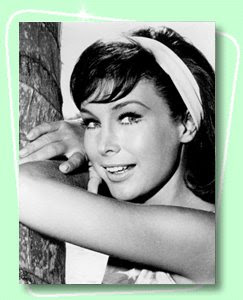This page brings to light some important issues to consider before having your hair chemically straightened. Once you've had it done, there's no going back... So get as much info as possible before taking the plunge!
Why Chemicals?
The frizzy nature of curly hair has people everywhere using flat irons on a daily basis to straighten their locks and add some shine. That's a lot of time invested. So, naturally, the notion of permanently straight hair (well, until it grows out) holds appeal. The question is, does chemical hair straightening live up to the ideal?
Unfortunately, many times the answer is "No!"
Probably the most effective chemical hair straightening process is Thermal Reconditioning, which can be a great long-term solution that will cut down (or possibly eliminate) the time required for straightening the hair.
Many other straightening processes leave the hair in a not-curly, not-straight, but plenty frizzy state. From this point, it's easier to smooth out than a tight curl is, but it's also not an option anymore.
With curly hair, on the days when you just don't have the energy for all the styling, you can opt to just wear it curly. Chemically straightened hair generally looks fuzzy and unfinished unless it is styled in some way. So, although chemically straightened hair takes less time to style, it's also somewhat limiting.
A Look at the Chemical Hair Straightening Process:
The Sedu flat iron has revolutionized the world of hair straighteners and is now considered far and away, the best of the best. It is made with Tourmaline technology which produces a huge amount of negative ions, straightening your hair record fast, but without the damage of traditional heat styling.
That's what you're paying for with this iron. Not a brand name or fancy packaging...it's all about the transformative power the Sedu flat iron has on troublesome hair. The plates glide through the hair, straightening quickly and effectively while boosting shine in a BIG way! There are hoards of user reviews (over 2000) and before/after photos at Folica.com. See what others have to say about this tremendous new tool.
Sedu Ionic Ceramic Tourmaline Flat Iron
First, a Warning: The procedure for permanent hair straightening uses harsh chemicals. It should always be done by a professional hair stylist familiar with the process. You can buy hair relaxing kits to use at home, but it's not recommended. Hair relaxing formulas use harsher chemicals than hair coloring formulas or perms. Straightening hair at home is not as easy as DIY hair coloring. The task should be left to experienced professionals.
Determining Hair Condition
At the salon, the hair professional should begin with a strand test to understand your hair type. The chemical procedure is received better on virgin hair that's had very little damage in the past. Thin hair will require a shorter time to be relaxed while coarse hair may require a longer procedure or harsher chemicals. Your stylist will need to determine this before beginning the process on your hair.
Damaged hair can become dry, brittle and prone to breakage. It will definitely look worse after being chemically straightened. You're better off to grow the unhealthy hair out and wait for new hair to receive the chemical procedure on. Go in with your hair in the best condition possible.
If your hair is damaged and you're determined to have it chemically straightened anyways, take a month or two beforehand to prepare your hair using intense hair reconstructing treatments.
Application: Strong chemicals are applied to the hair, directly on the hair shaft. There are generally two solutions... one to break down the keratin protein bonds in the hair, the other to reset the bonds after the hair has been straightened.
The first solution is applied on dry hair. Then carefully combed through the hair, taking care of not to stretch it. The hair is extremely fragile during this time and should not be disturbed too much.
The solution is generally left on for about 5 to 8 minutes, depending on the hair type and the type of chemical hair straightening solution used.
Once the stylist determines that the keratin bonds are free from their curly nature, s/he will remove the first solution and apply the second, to reset the bonds in the new, straight formation.
Maintenance: After the procedure, it's important to follow your stylist's instructions about after-care. The hair will be fragile and prone to excess breakage. A protein rich shampoo will help maintain the hair's elasticity and shine and increase its strength. Replace moisture by conditioning after each shampoo and weekly reconstructing treatments. Use a quality leave-in conditioner for detangling if necessary.
Depending on your hair growth, touch up applications should be done about twice a year. Avoid further chemical treatments, like bleach or permanent hair coloring. If you need to color your hair, use a semi-permanent. They're much gentler on the hair and may actually help to improve the appearance of damaged hair by adding shine and evening out color.
Although chemical hair straightening can dramatically reduce your styling time, there's still a lot of effort required to keep your hair looking good and minimize damage.



































